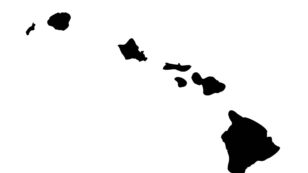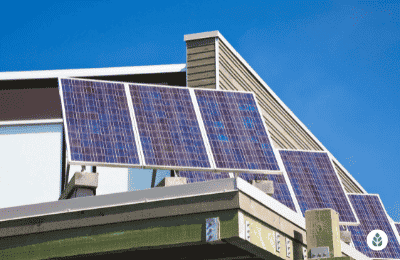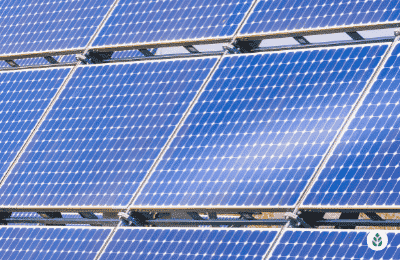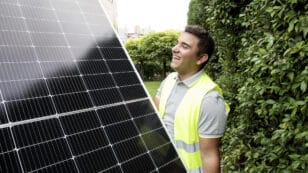
How Much Do Solar Panels Cost in Hawaii? (2024 Savings Guide)
In this guide on the cost of solar panels in Hawaii, you’ll learn:
- What the average cost of going solar in the Aloha State is
- How Hawaiians can save money when going solar
- Which local installation companies have the best prices
Each product and or company featured here has been independently selected by the writer. You can learn more about our review methodology here. If you make a purchase using the links included, we may earn commission.
Hawaii is one of the best and most affordable places to go solar in the entire country. Not only are the offset electricity rates the highest in the nation — leading to savings that are well above average — but the cost of solar panels in Hawaii is also well below average, thanks to the small systems needed to offset local energy consumption rates.
In this guide, we’ll be discussing solar panel costs in Hawaii, including how much you can expect to pay to go solar, what factors influence your total cost, how to save money on your photovoltaic (PV) system and more.
What Will Your Solar Panel System Cost in Hawaii?
The average cost of solar panels in Hawaii is around $3.39 per watt. Since equipment is priced on a per-watt basis, the total installation price will depend on the size of your system.
Since most Hawaiians need systems that are around 5.5 kilowatts (kW) to offset their below-average energy demands, the typical total system cost is $18,645 before any tax incentives or $13,052 after the federal investment tax credit (ITC) is applied.
The table below includes some alternative pricing estimates based on some other common system sizes in Hawaii.
| Solar System Size | Energy Use (per month) | House Size (sq ft) | Total Cost | Cost After the Federal ITC | Energy Savings (over 25 years, after system is paid off) |
| 3 kW | 300 kWh | 600 | $10,170 | $7,119 | $29,079 |
| 4 kW | 400 kWh | 800 | $13,560 | $9,492 | $38,772 |
| 5 kW | 500 kWh | 1,000 | $16,950 | $11,865 | $48,465 |
| 6 kW | 600 kWh | 1,200 | $20,340 | $14,238 | $58,158 |
| 7 kW | 700 kWh | 1,400 | $23,730 | $16,611 | $67,851 |
| 8 kW | 800 kWh | 1,600 | $27,120 | $18,984 | $77,544 |
| 9 kW | 900 kWh | 1,800 | $30,510 | $21,357 | $87,237 |

Rising Sun Solar

Regional Service
Average cost
Pros
- Many years of experience
- Competitive pricing
- Locally owned and operated
Cons
- Relatively short workmanship warranty

RevoluSun Hawaii

Regional Service
Average cost
Pros
- Great warranty coverage
- Offers products from leading manufacturers
- Many financing options
- Excellent reputation
Cons
- Limited brands of solar equipment available
- Slightly expensive

Nova Solar

Local Service
Average cost
Pros
- Representatives are experts on local policies
- NABCEP-certified technicians
- Offers products from leading manufacturers
- Great warranty coverage
Cons
- Limited service area
- Slightly limited service offerings
How Do Hawaii’s Solar Prices Compare to the National Average?
The average cost per watt for solar panels in Hawaii is $3.39, which is right in line with the national average of $3.33. That means that you get about the same value for the money in Hawaii as you would in most other states when converting to solar.
However, Hawaiians use less energy than residents of any other state, according to the Energy Industries Association (EIA) and, therefore, need systems that are smaller than average to offset their energy demands. The state has an average system size of just 5.5 kW, which is less than 60% of the U.S. average.
That means your total installation price in Hawaii will be much lower than the national average — $18,645 in Hawaii compared to $29,970 in the U.S. before the federal solar credit, or $13,052 in Hawaii compared to the national average of $20,979 after the credit.
All in all, Hawaii is one of the most affordable places to go solar in the country.
What Are the Main Factors of Solar System Costs in Hawaii?
Although the average solar power system installation price in Hawaii sits around $13,000 after the federal credit, it’s not uncommon to see local installation prices anywhere between $7,119 and $21,357. The price range is so large because there are a handful of cost factors that can push your installation total above or below the state average. These include the following:
- How much energy you use in your home each month
- Whether or not you install a battery (and have access to net metering)
- The efficiency of the panels you install
We’ll explain the significance of each of these factors in the following sections.
Hawaii’s Below-Average Energy Needs
Your system size will generally be the most significant cost factor when it comes to your solar array, but the system size is based on how large of a system you need to offset your monthly energy needs. That means homeowners with higher energy demands will need larger and more expensive systems.
Hawaiians, in general, use very little electricity, having the lowest consumption rate — just 537 kilowatt-hours (kWh) per month — of any state in the country. This means a total installation price that’s well below average.
If you have a larger home, though, or just generally high energy needs, you’ll need a bigger system with more panels to offset your consumption. The more panels you install, the more expensive your home will be, so higher energy usage each month means higher installation totals.
Although your upfront cost will be higher if you install a system that will meet or exceed your energy demands, we still strongly recommend you upsize your array. A system that’s slightly oversized for your home will be far more likely to eliminate your energy bills, and that’s super important in Hawaii, which has the highest per-kWh energy rates in the nation.
Adding a Solar Battery for Net Metering and Backup Power
Next, solar batteries — like the Tesla Powerwall — add between $10,000 and $15,000 to your system total on average, but in many cases, they pay for themselves in Hawaii, and they remain desirable. Many Hawaiians opt for solar batteries for three primary reasons.
First, solar batteries give you access to effective net metering, which means you can overproduce during the day and then use that excess energy at no cost when you need it, like when your panels don’t produce electricity at night. Unfortunately, Hawaii no longer mandates that utility providers offer net metering. Some customers will still have access, but others often choose to add on solar batteries to get access to the next best thing.
Second, solar batteries let you maintain power through blackouts, which are more common in Hawaii than in most other states and are only getting more frequent.
Finally, customers of Hawaiian Electric — which now includes Hawaiian Electric Company (HECO), Maui Electric Company (MECO) and Hawaii Electric and Light Company (HELCO) — can get a solar rebate for installing batteries alongside their panels. This makes batteries far more affordable and helps reduce the payback period, which was relatively short to begin with.
We strongly recommend batteries for Hawaii solar customers. Not only can it help maximize your savings by providing effective net metering, but adding one will be cheaper and more beneficial than it would in most other states.
Hawaii’s Abundant Sunlight and Your Panel Efficiency
Another cost factor to consider is the quality or efficiency rating of your solar panels. In most cases, investing in a solar panel brand with a higher efficiency rating will mean higher equipment costs, so you should optimize your brand choice based on your current budget and long-term savings expectations.
A panel with a lower efficiency rating — like a polycrystalline panel — will produce less energy in all scenarios, while one with a higher efficiency rating — like a tier-one monocrystalline panel — will generate maximum power.
Since Hawaii sees an average of 240 sunny days per year, which is well above the national average of 205, you can choose whichever is best for you.
A low-efficiency panel will still likely produce sufficient power to save you money overall, given the abundance of sunlight, and it will keep upfront costs down. A high-efficiency panel is more likely to eliminate your electric bill and maximize your savings over time, although initial pricing will be higher.
We suggest high-efficiency panels to get the most financial benefit out of your system, even though it means paying more for your system initially.
Additional Costs of Going Solar in Hawaii
In addition to paying for solar panels, there are some other costs you might want to consider before deciding if you can afford to convert to clean energy. We’ll explain some of these added fees below.
- Additional solar equipment: As mentioned above, many Hawaii residents choose to add on solar batteries, which can add thousands to the installation total. However, there are some other pieces of equipment that you might need to pay for separately, including inverters, conduit, wiring and racking equipment to attach your panels to your roof and electrical system.
- Building permits: All cities in Hawaii require building permits for rooftop solar systems to ensure everything is installed and connected to the grid safely. Many municipalities charge filing fees and/or inspection fees for the permits, which usually total between $25 and $300, depending on where you live.
- Administration fees and product markup: Hawaii is home to more than 75 solar panel installation companies, all of which charge different prices for their labor and product markup. Additionally, companies have different fees for administrative work, like helping you file for the solar incentives available in Hawaii, filing for permits and more.
- Interconnection fees: All electric companies in Hawaii will require an interconnection application, and most also need to complete an inspection before your system can be connected to the grid. Many companies charge application fees for interconnection, although they’re relatively low. Most fall between $25 and $150.
Watch Below: Learn What Hawaii’s Solar Tax Credit Is And How Much You Can Save
What Maintenance Costs Can Solar Owners Expect in Hawaii?
Thankfully, there are no ongoing maintenance costs you need to worry about in Hawaii. Some homeowners will opt for panel cleaning services to keep the panel surfaces free of pollen and dirt in an effort to maximize production. However, these services are voluntary, and in an area like Hawaii that gets abundant sunlight, it’s questionable whether or not you’d notice a difference in production with or without the service.
Most issues you’ll run into with your panels will be covered by your warranties. Hawaii doesn’t get much in the way of extreme weather, so your manufacturer’s warranty will likely be the most valuable coverage. Those typically last for 25 years, meaning you’ll have more than two decades without having to worry about maintenance costs in many cases.
Which Solar Financing Options Will Help You Save the Most in Hawaii?
There are four common solar payment options available in Hawaii: a cash purchase, a solar loan, a solar lease and a power purchase agreement, commonly referred to as a PPA. Your initial installation price and your long-term savings hinge heavily on which option you choose.
As you might imagine, a cash purchase is the least accessible because it comes with the highest upfront cost. However, cash purchases let you take the federal credit for effective savings, and they lead to the highest energy savings over the life of your system.
Thankfully, cash purchases are more affordable in Hawaii than in most states, thanks to the well-below-average installation costs. We strongly recommend a cash purchase, especially since the federal credit and the Solar and Wind Energy Credit — the state tax credit — bring the average conversion cost down to a palatable $13,000.
A solar loan is more widely available because there usually is no money required upfront. Instead, you finance your system and pay a monthly fee plus interest over a period of eight to 25 years in most cases.
The interest you pay usually adds up to a few thousand dollars, which cuts into your overall savings and extends your payback period. However, the GreenSun Hawaii and the Green Energy Money Saver (GEMS) financing programs available in Hawaii help minimize interest and reclaim some of those savings that would otherwise be lost.
A solar lease doesn’t let you take the federal credit, which has an average value of $5,594 in Hawaii. However, leases require no upfront funds, and they have fewer credit requirements than loans. This is an accessible option, but the savings over time are significantly lower, so we only recommend these to homeowners that can’t afford a cash purchase and won’t qualify for a loan.
PPAs are the option that saves you the least. It doesn’t let you take the federal credit, and it doesn’t lead to panel ownership or a payback period. We don’t recommend these, especially in Hawaii, where the state financing programs are so appealing, and leases are just as widely available.
If you want to keep your payment options open, we recommend checking out Rising Sun Solar and RevoluSun Hawaii. Both companies are highly rated and offer all four payment options discussed above.
We also recommend you use our solar calculator to figure out what a solar panel system customized for your home would cost. You can then use that information and the table below to decide which options you would be able to afford now and over time.
| Financing Method | Total 25 Year Savings (estimated) | Initial Costs (estimated, after the ITC) | Monthly Payments (estimated) | Payback Period (estimated) |
| Cash | $76,847 | $13,052 | $0 | 5 years |
| Loan | $71,000 | $0 | $50 to $125 | 8 years |
| Lease | $5,000 | $0 | $205 | N/A |
| PPA | $4,000 | $0 | $205 | N/A |
What Are Other Ways You Can Save When Going Solar in Hawaii?
Although the cost of converting to solar in Hawaii is lower than in most states, most homeowners still look for ways to keep costs down. Below are some strategies we recommend employing to reduce the upfront and long-term price of your home solar energy system:
- Install a solar battery
- Take advantage of Hawaii solar incentives
- Choose your panel brand wisely
In the following sections, we’ll explain why and how each of these tips can save you money on the typical cost of the system.
Install a Solar Battery
One of the best ways to save over time when converting to solar in Hawaii is to install a solar battery alongside your panels. Solar batteries will bump up your upfront costs, but they very often pay for themselves in the Aloha State.
As mentioned before, Hawaii no longer mandates net metering, which means you’ll still have to pay the retail rate for any energy you pull from the grid. That means that when your panels aren’t producing sufficient energy — like at night or on cloudy days — you’ll pay the nation’s highest per-kWh rates for electricity if you don’t have net metering.
Installing a battery gives you access to what we call effective net metering because you can store free energy for later use. Any over-production can offset consumption when the sun isn’t shining.
If you don’t have access to net metering from your electric company, paying for a battery can still help you reach those near-$77,000 in energy savings that are average in the area. Plus, it boosts your home value more than just installing residential solar panels.
Take All the Solar Incentives in Hawaii That You Can
Solar incentives and rebate programs are one of the best ways to save money upfront on your residential solar system, and Hawaii has more attractive solar programs than most states.
First, all residents have access to the federal income tax credit. This provides a credit to your income taxes owed for 30% of your system total, which comes out to an average of just under $5,600 in HI.
There’s also a state tax credit called the Renewable Energy Technologies Income Tax Credit (RETITC) — formerly the Solar and Wind Energy Credit — which provides an additional credit to your income taxes owed for up to 35% of your system costs or $5,000.
Residents can earn money for all solar production via the Community Renewable Energy Program, get affordable loan funding from the GEMS program or the GreenSun Hawaii program and explore local incentives and rebates from utility companies and individual municipalities, including Honolulu (property tax exemptions and financing) and the island of Oahu (solar battery rebate).
Overall, incentives in Hawaii could save you more than $10,000, which means your panels pay for themselves much faster and you enjoy boosted energy savings over time.
Optimize Your Panel Brand
Finally, we suggest you take some time to choose the solar panel brand that works best for you and your home.
Since Hawaii sees more abundant sun than most states, residents can often get away with panels that don’t have the highest efficiency ratings. Lower-efficiency panels are more affordable upfront and lower your solar panel installation costs, but the available sunlight means you’ll still have the opportunity to offset your energy consumption.
On the other hand, installing a high-efficiency panel like Maxeon/SunPower panels will maximize your production and your savings over time, but they come at a higher upfront cost.
Ultimately, you’ll need to decide if you prefer to save upfront or save more over time on your electric bills. We recommend high-efficiency panels, as they give you the best chance to offset the well-above-average Hawaii energy costs.
What Are the Typical Costs of Hawaii’s Solar Installers?
Every solar installer in Hawaii will have different pricing based on product markup, labor costs, administrative charges and more. The company you choose will, therefore, play a significant role in your total installation cost.
The table below includes a quick look at some relative pricing estimates for what we believe are the best solar companies in Hawaii. This should help you narrow down which installers are likely to fit into your budget.
| Solar Company | Superlative | EcoWatch Rating (Out of 5.0) | BBB Rating | Average Cost ($–$$$$$) |
| Rising Sun Solar | Solar Veteran | 4.5 | A+ | $$ |
| RevoluSun Hawaii | Outstanding Regional Installer | 5.0 | A+ | $$$ |
| SunPower by Eco Solar | Outstanding Local Installer | 4.5 | A+ | $$$$ |
| Malama Solar | Outstanding Regional Installer | 4.5 | A+ | $$$ |
| Independent Energy Hawaii | Outstanding Regional Installer | 4.0 | A+ | $$$ |
How Are Solar Costs and Regulations Trending In Hawaii?
According to the Solar Energy Industries Association (SEIA), the cost of PV equipment in Hawaii has dropped by a little over 50% over the past decade. The average system in Hawaii that costs $18,645 today would have totaled a little over $36,000.
Advancements in solar panel production and manufacturing processes are a big reason why costs have dropped so much, and we expect that downward trend to continue in the near future.
As far as incentives go, Hawaii’s regulations and solar laws seem to be pretty stagnant, which is a good thing. The incentives available right now are outstanding and better than in many other states. Since the state’s renewable portfolio standard (RPS) goal calls for 100% of Hawaii’s electricity to come from clean energy sources by 2045, we don’t foresee any negative changes to the incentives in the coming years.
Net metering is the perk that’s seeing the biggest negative changes across the country, but since the Aloha State doesn’t mandate net metering anyway, it seems that the incentives available are pretty safe.
With prices lower than ever before and incentives not set to disappear in the near future, now is a great time to go solar in Hawaii and start saving, especially since energy prices are only expected to go up as demand increases. If you’re ready for energy independence, you can use the tool below to get free solar quotes customized for your home.
FAQs: Hawaii Solar Panel Costs
In the following sections, we’ll answer some of the questions we get asked most often about going solar in Hawaii and the costs involved.
In most cases, yes! In fact, Hawaii is one of the best places in the country for going solar. Not only is the cost per watt for panels around the average price, but system sizes and total system costs are about half of the national average, and every kilowatt-hour your panels offset will be worth more than anywhere in the country, thanks to Hawaii’s above-average energy prices. The average Hawaii resident saves nearly $77,000 by converting to solar, and that’s after the panels pay for themselves.
The size of your solar panel system isn’t based on your home’s square footage and is instead correlated to your monthly energy consumption. With that being said, the typical cost for a solar array for a 2,000 sq ft house in Hawaii is around $13,052 after the federal tax credit is considered.
Yes, in addition to the federal solar tax credit, Hawaii has a state tax credit that can reduce your tax liability by 35% of your system installation price up to a maximum of $5,000. Combined with the federal credit — an average of $5,594 in Hawaii — these credits add up to an average of over $10,000. These are some of the most appealing perks in the solar industry.
Yes, Hawaii is one of the best places to install panels and reduce your carbon footprint. The state sees 240 sunny days per year, which is well above the national average of 205. Plus, solar energy is worth more in Hawaii than in any other state since it has the highest energy prices in the nation.
Related articles
Comparing authorized solar partners
-
- Many years of experience
- Competitive pricing
- Locally owned and operated
- Relatively short workmanship warranty
A+Solar Veteran
Having trouble deciding? Click below and use our process to receive multiple quotes instead:

 233k
233k  41k
41k  Subscribe
Subscribe 





